
Congratulations – you’ve booked your first international trip! But what do you need to do to prepare for your initial hop across the pond? Here are 8 things to do to get ready for your first trip abroad.
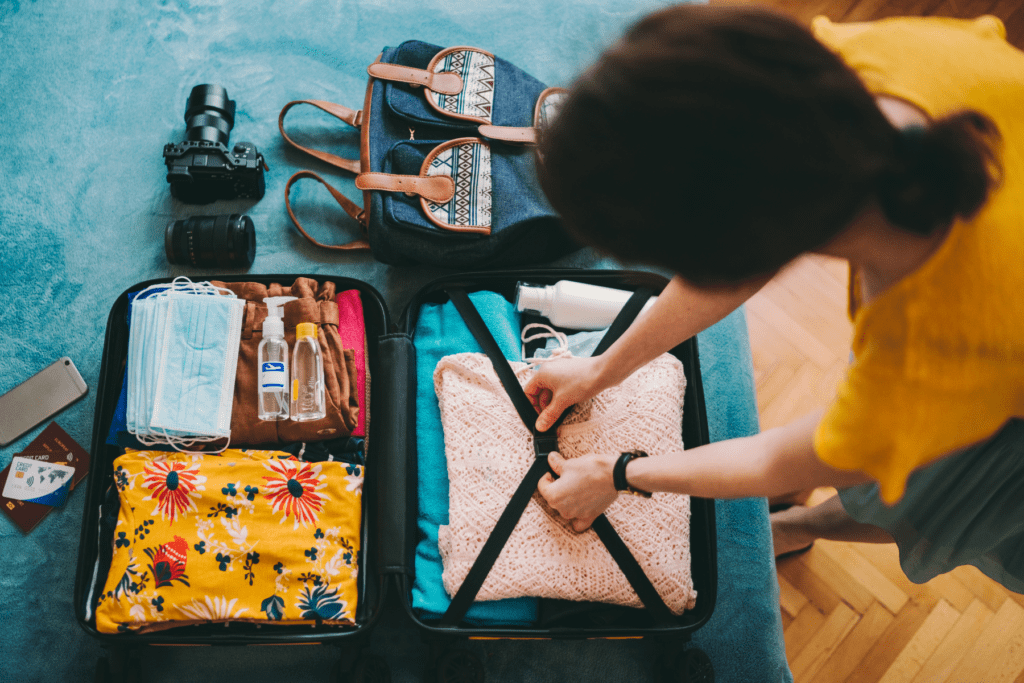
Packing
The first thing you may be worried about is how to pack for your first international trip. It’s scary to go to an unfamiliar place and not know if you can simply buy whatever you might have forgotten or discover you need during the trip. But don’t panic! First of all, most things you need can be purchased all over the world. You may have to settle for an unfamiliar brand, but usually you can find what you need. And you will find that people everywhere are super helpful. If you aren’t sure if a product meets your needs, simply ask someone for help.
For example, I somehow got all the way to Singapore and realized that I only had the bra I was wearing on the plane – I forgot to pack extras. As soon as I could, I found a mall with a department store and wandered around, looking at the unfamiliar brands and sizing. So I found a salesperson and said I needed a bra but wasn’t sure what size. She helped me choose several that fit.
But I know you don’t want to spend your precious vacation time figuring out how to buy things you forgot! Fortunately, we have plenty of posts on what to pack and how to pack so that you will be fully prepared for that first international trip.
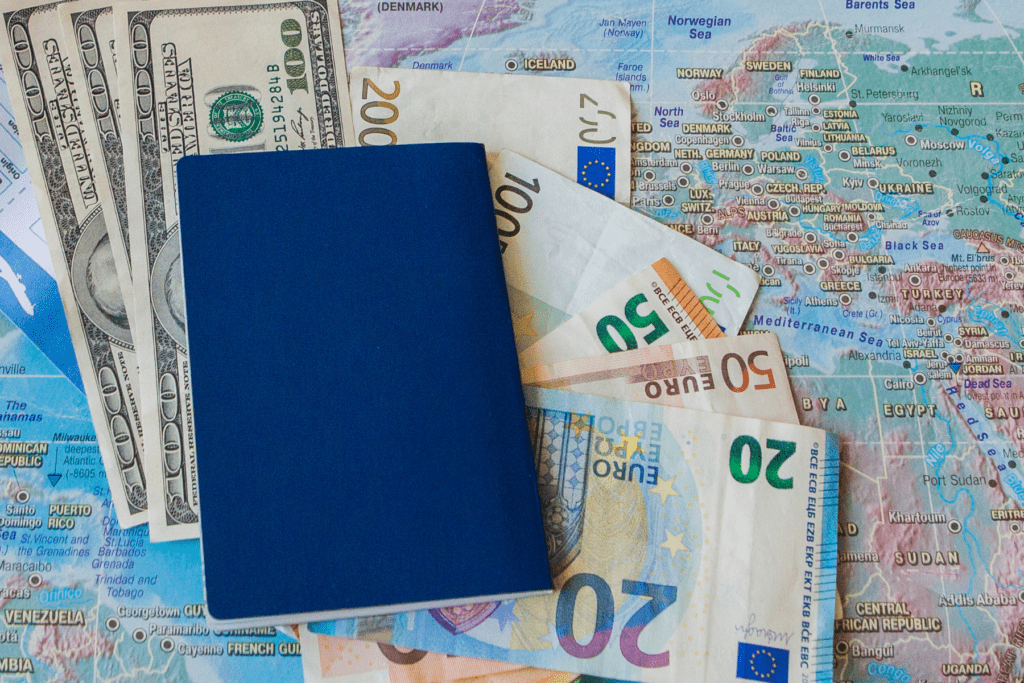
Money Matters
Another thing you may be wondering about is how to get foreign currency, or if you even need to at all. The answer to this question depends on the country you are visiting and requires a bit of web sleuthing. In some countries, you can get by without any local cash and simply depend on your credit card. In other countries, you may need a small amount of currency, but you can withdraw it from an ATM when you get there. Still others accept U.S. Dollars, so there’s no need to exchange money at all. A simple Google search with the terms, “do I need cash in [country]?” will give you a good idea.
If you do determine that you need foreign currency, there are a lot of options on how to get it. Check out this post for instructions and details on the various ways to get foreign currency and things to watch out for.
Another money matter you may be wondering about before your first international trip is tipping. Find out the tipping culture in the country you are visiting. This is another worry that a simple internet search will resolve. Just search for “tipping in [country].” But if you run out of time, here are a few rules of thumb that are appropriate in most countries in the world:
- Restaurants: 10%
- Porters: the equivalent of $1 USD in local currency per bag
- Taxis: round up
- Guides: 10% of the tour price
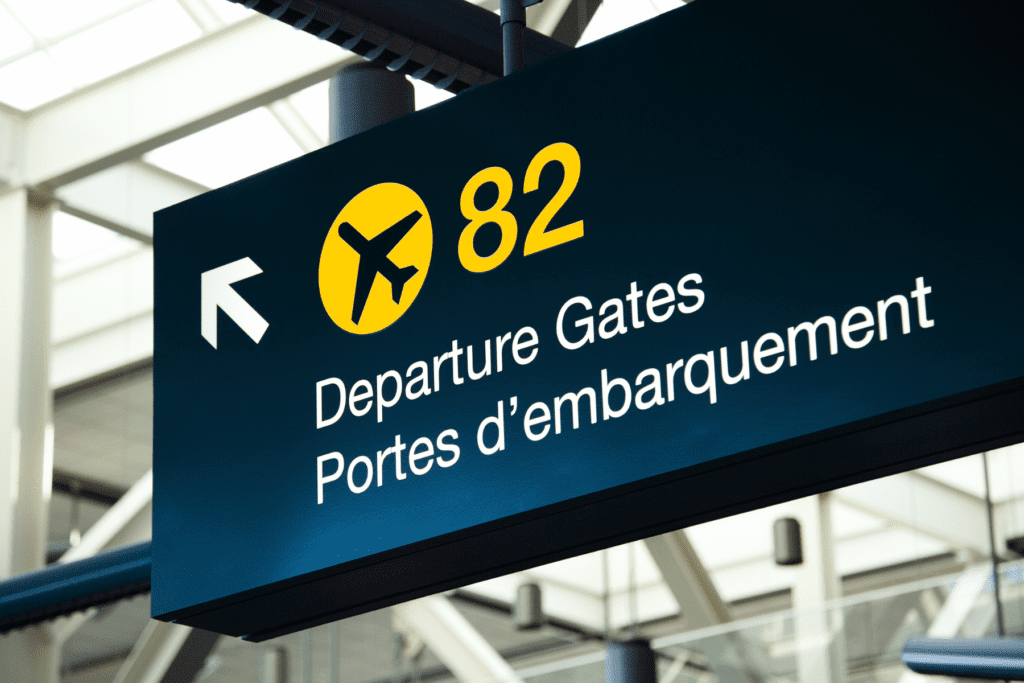
Local Language & Lingo
As soon as you book your first international trip, you may be tempted to spend a lot of time learning the local language. And if you have plenty of time, do it! But most of us won’t be very successful learning very much in the time between booking a trip and departure.
No matter where you go, someone will speak English. And in many countries, you will find that most signs are also in English and the local language. Most people around the globe learn English in their equivalent of K-12 schools. And they often learn English better than we learn a foreign language in U.S. schools. Whoever you are interacting with may be a bit rusty or not feel super confident speaking English with you. But I’ve found that they will muddle through with you or try to find someone who can more effectively communicate with you.
Still, you can make some effort to learn a few phrases before you go. While most people everywhere are able to communicate with you in English, they will appreciate your effort to interact in their language, if only to a limited degree. Definitely learn the local equivalent of the following words and phrases:
- Hello
- Goodbye
- Thank you
- Excuse me
- I’m sorry
- Do you speak English?
Another thing to research in advance is the local lingo for certain English words. For example, people in other countries might not know what a restroom or bathroom is. I’ve found that people in most countries recognize the word toilet or WC (water closet). And don’t say you are from the U.S. People abroad don’t think of our country as the U.S. but as America. If you say you are from America, they will understand.
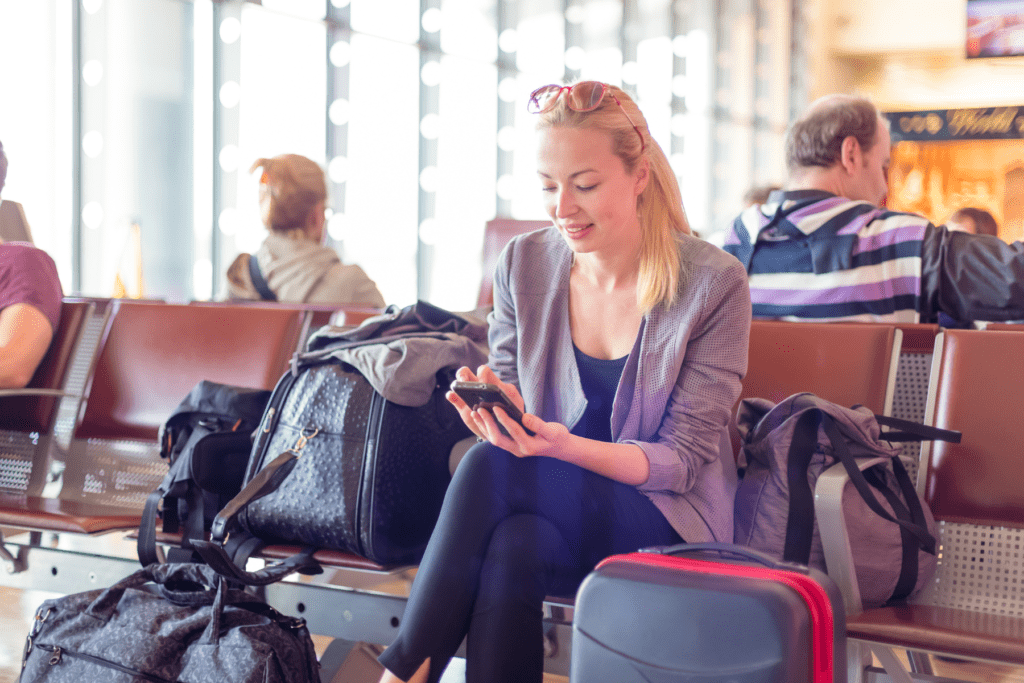
Staying Connected
Even though you are traveling, you will want to stay connected with friends and family back home. After all, you need to make them jealous by posting terrific pictures and videos of your trip on social media! But never go abroad with a cell phone without making a plan in advance on staying connected.
We have a post on staying connected while abroad with a lot of details you should refer to. But if you do nothing else, make sure you contact your cell phone plan provider and activate the international coverage on your plan. Even if you don’t end up using it, you will protect yourself from huge bills that can result from accessing your data plan abroad.

Brush Up on Safety
I’ve traveled all around the world and never been the victim of any type of common crime or scam. The main reason for this is that no matter where you go, most people are good, law-abiding citizens with your best interests at heart. But another reason I think I’ve stayed safe while traveling is that I always research my destination in advance. This way I know what is more likely to happen in any place and can make preparations to prevent it.
You can prep for your trip by reading our post on simple strategies for staying safe abroad. And if you remember nothing else, here’s a few best practices for staying safe while traveling:
- Be aware of your surroundings.
- Try to blend in with the locals – don’t wear flashy clothes or expensive jewelry.
- Keep valuables and money tucked away in a crossbody bag, in front pockets, or in a backpack carried in front.

Electricity & Adapters
The world of electric adapters, voltage and frequency is probably as murky to me as it is to many new travelers. I just don’t understand why the entire world can’t just use the same type of plugs and be on the same voltage! But alas, it’s not our reality. The good news is that you don’t really have to understand how electricity works to make sure you have what you need.
Step 1: Figure Out What Type of Plug Adapter You Need
Google to the rescue again! Just type in the search term “plugs in [country].” Images of the adapter you need and links to articles with all kinds of helpful information will pop up. For most countries, you can get by with this Universal Travel Adapter. But make sure to check as it won’t work everywhere. And then make sure you bring a Power Strip so you can plug in several devices with only one adapter.
Step 2: Check Voltage (V) and Frequency (Hz) of the Country & Your Devices
Voltage is the pressure that pushes electricity between two points. In the U.S., the voltage is 120 V. But in many other countries, it’s 220-240 V. Frequency is the number of electrical waves per second. In the U.S., frequency is 60 Hz. In most other countries, its is 50 Hz.
Clear as mud? Yeah, me too! But all you really need to know is the voltage and frequency requirements of electrical devices match the country you are traveling to. And if they don’t, you will need to purchase a Power Converter. A converter will increase or decrease the voltage and frequency of the electricity coming from the outlet so that it matches the requirements of your device. Here’s a handy list of countries and their voltages, frequencies, and plug types.
The good news is that most laptops, cell phones, and tablets are compatible with all voltages and frequencies. You do not need a converter, but you will likely need a plug adapter. Other devices such as hairdryers, curling irons or straighteners, and travel irons will likely need both a converter or a plug adapter. Or do what I do – leave them at home! Use the hotel hairdryer (hint – if the room doesn’t have one, ask for one at the front desk – most will have them). And just leave your hair al la natural and your clothes wrinkled!
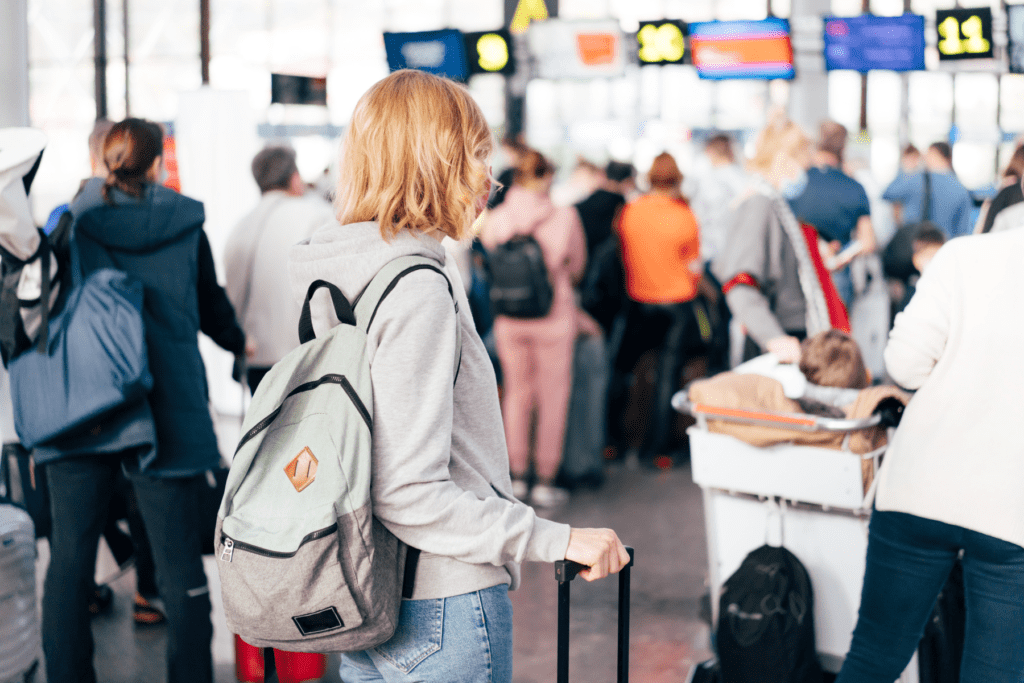
Understand Immigration & Customs
Before disembarking on your first international trip, the idea of going through immigration and customs may seem daunting. But don’t worry – it’s really not a big deal. The main issue is usually the long lines you have to stand in!
Immigration
Once you exit the plane after your international flight, follow the crowd. Everyone on that plane has to go through immigration and customs, and there is no way to get lost. Once you reach the immigration area (also called passport control), look for the appropriate line. There’s usually a line for citizens of that country and another one for citizens of other countries. Get in the citizens of other countries line and wait your turn.
Once it is (finally) your turn, approach the immigration agent. He or she will probably ask you a few simple questions like how long you will be in the country and if your trip is for business or pleasure. Don’t expect the agent to be friendly – they are usually just focused on getting you through the process as quickly as possible. The agent will stamp your passport. Increasingly, many countries are also now taking your photo and fingerprints. And sometimes you will be given a little piece of paper to keep in your passport. Don’t lose it – they will ask for it when you go back through immigration on your way out of the country.
Customs
After you go through immigration, you collect any checked baggage. Then you go through customs. Most travelers will just proceed through the “nothing to declare” line. Usually there’s no additional screening – you just walk right through. In some countries, you may have to put your luggage through a screening device, but this is rare.
Wondering what triggers going through the “goods to declare” line? This line is for people who are bringing in things they bought in a country that cost over $800 (make sure you keep your receipts). It’s also for people who are bringing in a lot of goods that they hope to sell. There are also limits to the amount of cash you can bring into a country without declaring it to customs (usually $10,000). You also need to go through this line if you are bringing in more alcohol than what is allowed by that country’s regulations. If any of these apply to you, you might have to pay tax on these goods.
Countries often have restrictions on food items you can bring to prevent the spread of pests and foreign animal diseases. It’s smart to declare any food you have with you unless it’s a pre-packaged snack. If you have a prohibited item, you do not have to pay a tax or a fine. But the item will be confiscated and destroyed.

Airport Transfer
Planning for your airport transfer is the last thing on this list of things to do before your first international trip. You may think this is a no brainer. But trust me, it’s good to have a plan after spending an uncomfortable and likely sleepless night on an airplane! You will be tired and the airport will be unfamiliar. Figuring out the best way to get to your hotel in advance will bring you peace of mind.
Rideshare
First, figure out how much money you are willing to spend. If you can spend $50-75, you can probably just book a rideshare or a taxi. If you prefer rideshares, you will want to do a web search on what ride share options are available. Familiar brands such as Uber or Lyft may be available in a country, but sometimes there are other rideshare apps that work better. Make sure to download them and get them set up before you leave home.
Taxi
If you can’t or don’t want to use a ride share, you should do a web search in advance on how to take a taxi from that airport and how much it costs. Typically there’s a taxi line right outside of the arrivals hall. Simply walk up and join the queue. It’s a good idea to have your hotel’s name and address clearly written in the local language so you can just hand that to the driver. And always agree on a price before entering into a taxi.
Never say yes to someone who approaches you and asks you if you need a ride at an airport. Almost all airports do not allow this, so it’s likely that the person offering you a ride will overcharge you or worse.
Public Transportation
If you want to save some money, there’s usually public transportation options available. Google Maps will tell you the best way to get to your hotel from the airport using public transportation. Then do a web search on how to use public transportation in that city so that you know what type of tickets to buy and how to buy them. Also, consider how much luggage you are carrying and make sure you have packed lightly if you have to make a lot of connections.
What are your recommendations for people who are embarking on their first international trip?
Tell us below! You can also contact us and follow us on Facebook, Instagram and Pinterest so you never miss a post!


